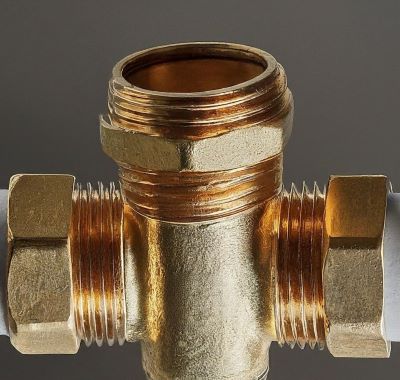Ever been in the middle of washing your car when a sudden geyser erupts from the hose connection? Leaky hoses can be a real pain, interrupting projects and causing frustration. But there’s a simple solution: brass hose barb fittings.
What are Brass Hose Barb Fittings?
A hose barb fitting is a small piece of hardware that connects a hose to another component. It typically has a barbed end with ridges that insert into the hose and a threaded end that screws onto another fitting or fixture. The key advantage lies in the material: brass.
Brass is a copper and zinc alloy that is highly valued for its resilience to rust and wear. Unlike plastic fittings that can crack and leak over time, brass fittings are built to last. Plus, brass can handle exposure to the elements without rusting or degrading, making them ideal for outdoor applications.
There are also different types of brass hose barb fittings available. Straight fittings create a direct connection, while elbow fittings change direction, and tee fittings create a branch point for connecting multiple hoses.
Why Use Brass Hose Barb Fittings?
So, why choose brass hose barb fittings over other options? Here are some compelling reasons:
➡️ Durability: Brass is significantly stronger and more durable than plastic. This translates to a longer lifespan for your fittings and fewer leaks to worry about.
➡️ Leak-Proof Connections: The barbed end of the fitting creates a secure grip on the hose, preventing leaks and ensuring a reliable connection.
➡️ Easy Installation: Forget about complicated crimping tools! Brass hose barb fittings simply screw on, making installation a breeze.
➡️ Versatility: These fittings come in various sizes to accommodate different hose diameters. They can also handle a wide range of applications, from water and air to light chemicals.
Applications of Brass Hose Barb Fittings
The versatility of brass hose barb fittings makes them a valuable tool for various tasks around the house, garden, and even for basic automotive maintenance. Here are some examples:
➡️ Around the House: Attach a sprayer to your hose, connect a washing machine hose, or fix a leaky faucet with the help of brass hose barb fittings.
➡️ In the Garden: Use them to create a drip irrigation system, connect a pressure washer hose, or fix a leaky sprinkler.
➡️ Automotive Uses: Refill your car’s coolant reservoir or connect a hose to bleed the brakes (remember, consult a professional for complex repairs).
Choosing the Right Brass Hose Barb Fitting
To ensure a secure and leak-free connection, it’s crucial to choose the right fitting. Here are the two key points to remember:
1. Size Compatibility: The barb size of the fitting needs to match the diameter of your hose for a snug fit. Most fittings will clearly specify the compatible hose size.
2. Thread Type: Brass hose barb fittings come with different thread types, such as NPT (National Pipe Thread) and BSP (British Standard Pipe). Make sure the thread type on the fitting matches the threads on the component you’re connecting to.
Installation Tips
Installing a brass hose barb fitting is a simple process. Here’s a basic overview:
1. Cut the hose squarely to ensure a good seal.
2. Slide a hose clamp (not always necessary, but recommended) onto the hose.
3. Insert the barbed end of the fitting into the hose as far as it will go.
4. Tighten the fitting onto the threaded component using a wrench, but avoid overtightening.
5. Slide the hose clamp (if used) up to the base of the fitting and tighten the screw.
Safety first! Always turn off the water supply before working on hose connections.
Conclusion
Brass hose barb fittings offer a winning combination of durability, leak-proof connections, and easy installation. Their versatility makes them a handy tool for various household, garden, and even some automotive tasks.
So, ditch the frustration of leaky hoses and keep a variety of brass hose barb fittings on hand for your next project. You’ll be glad you did!
Post time: Jul-30-2024


